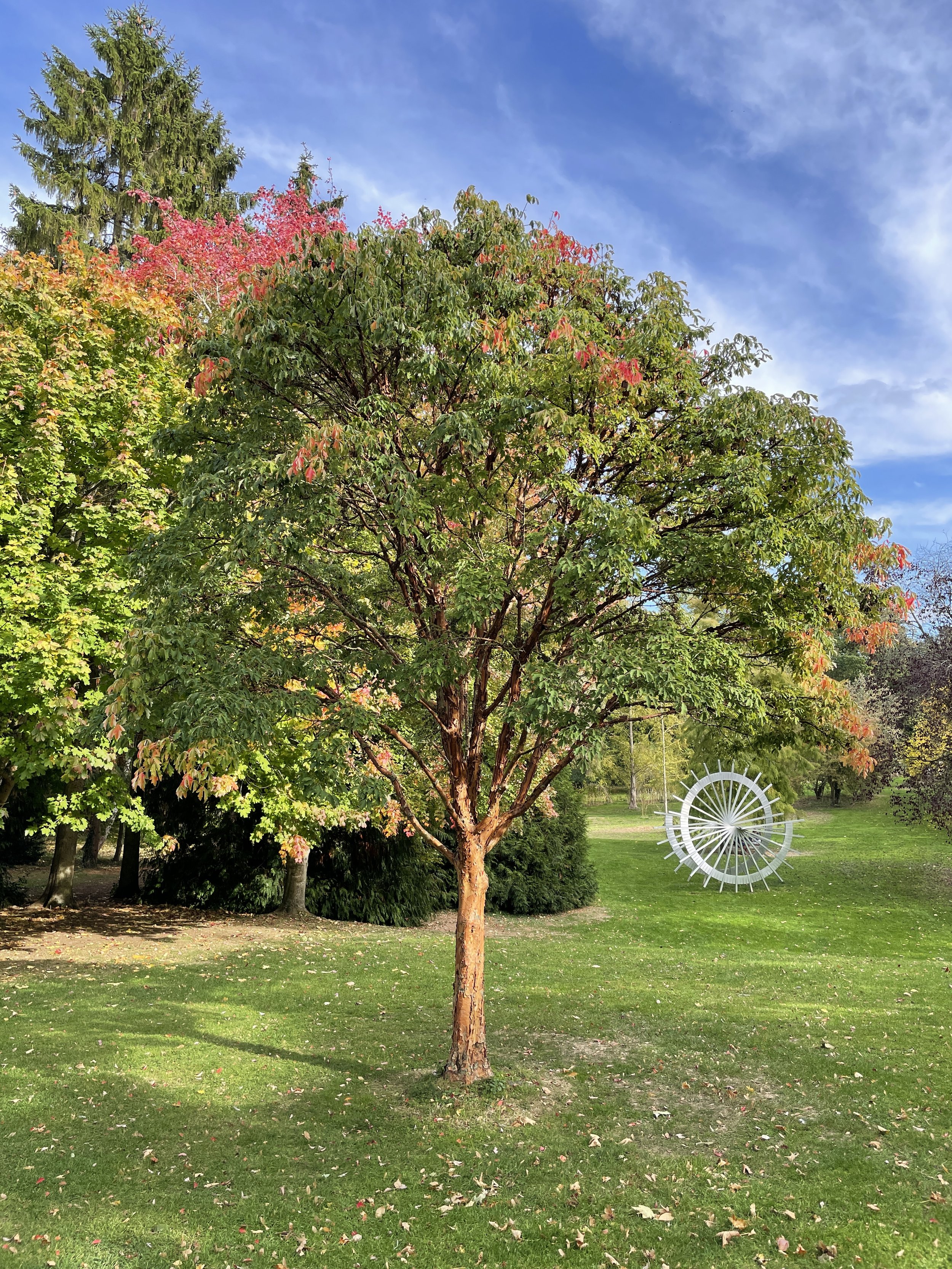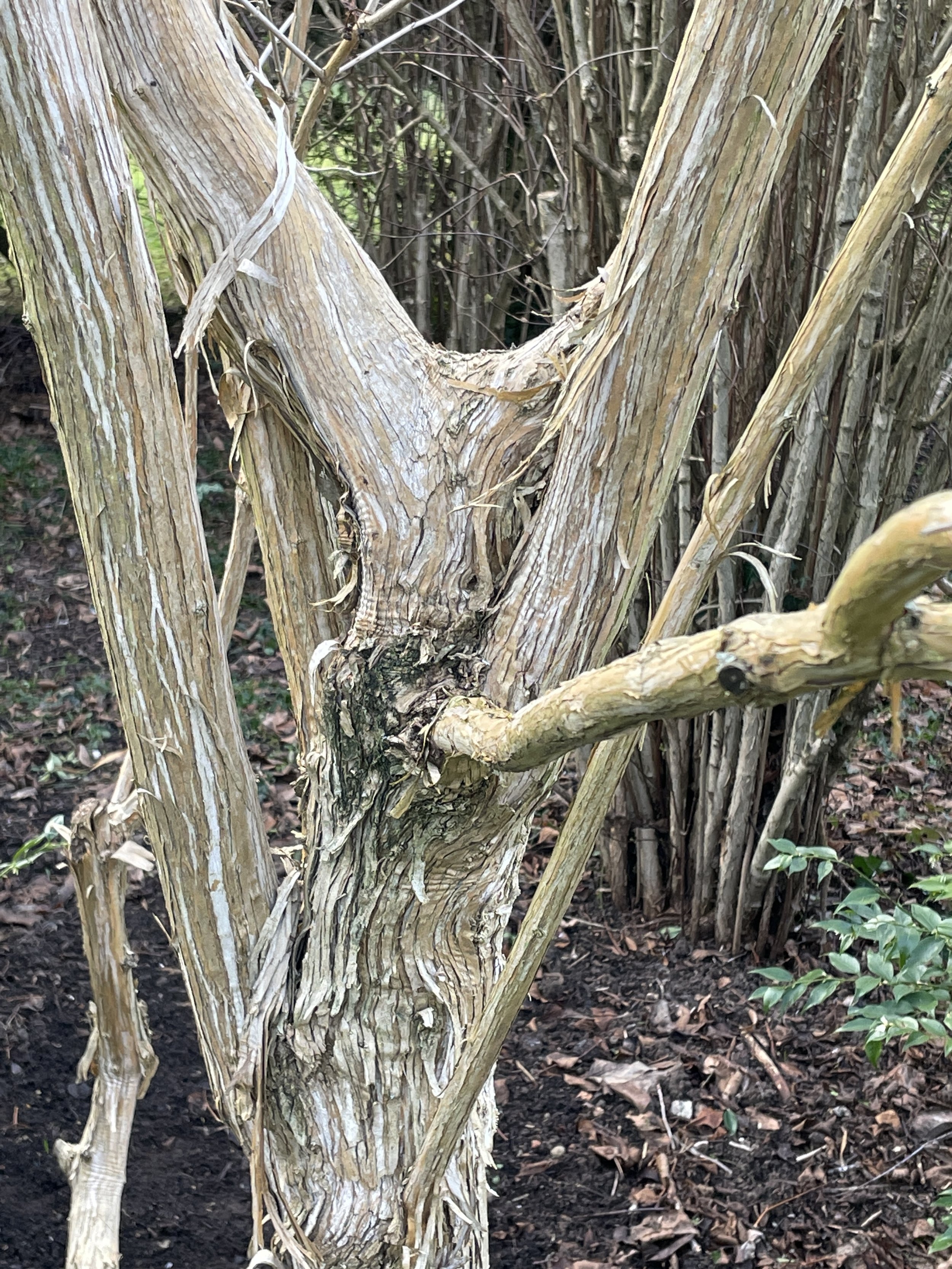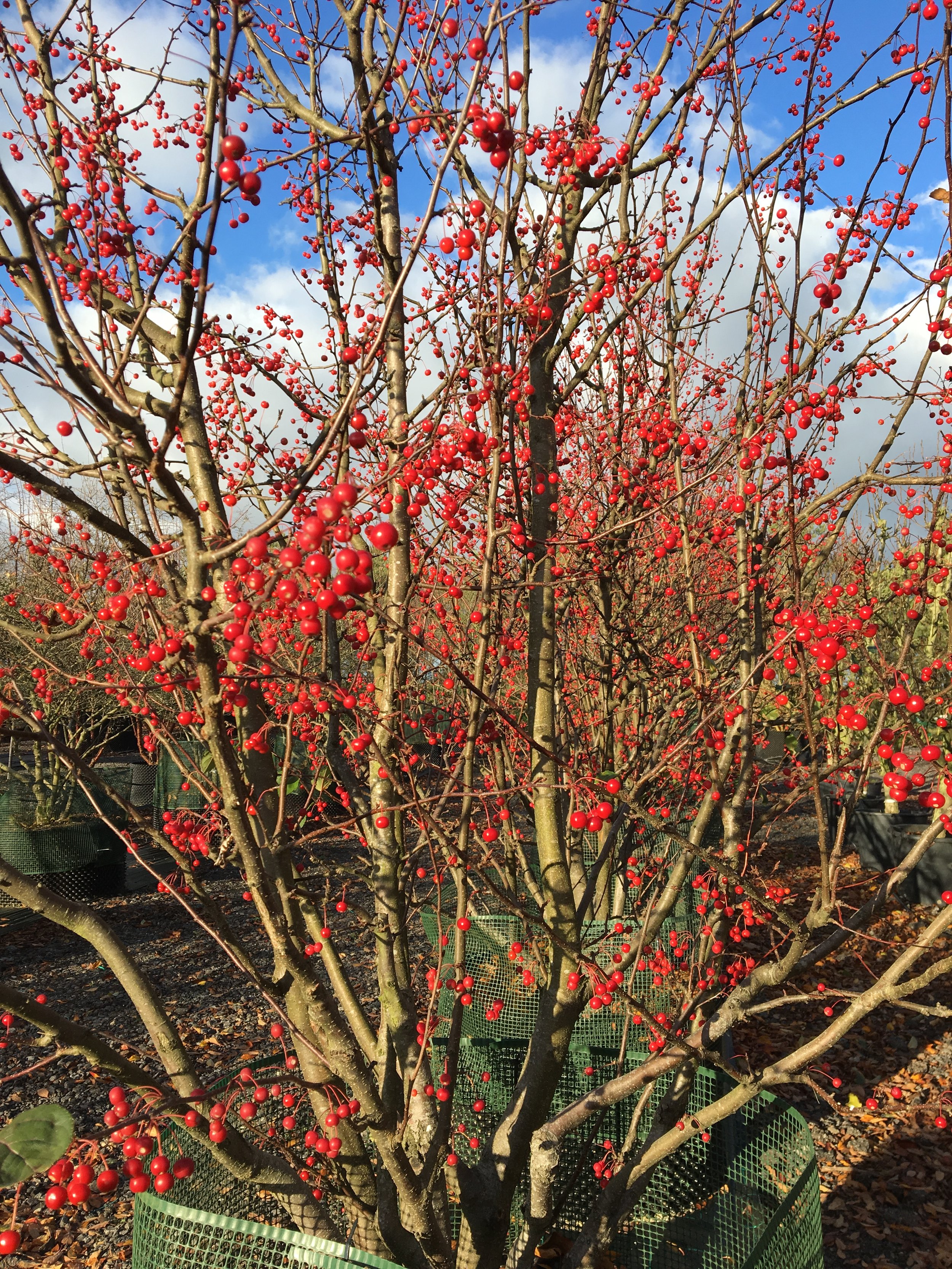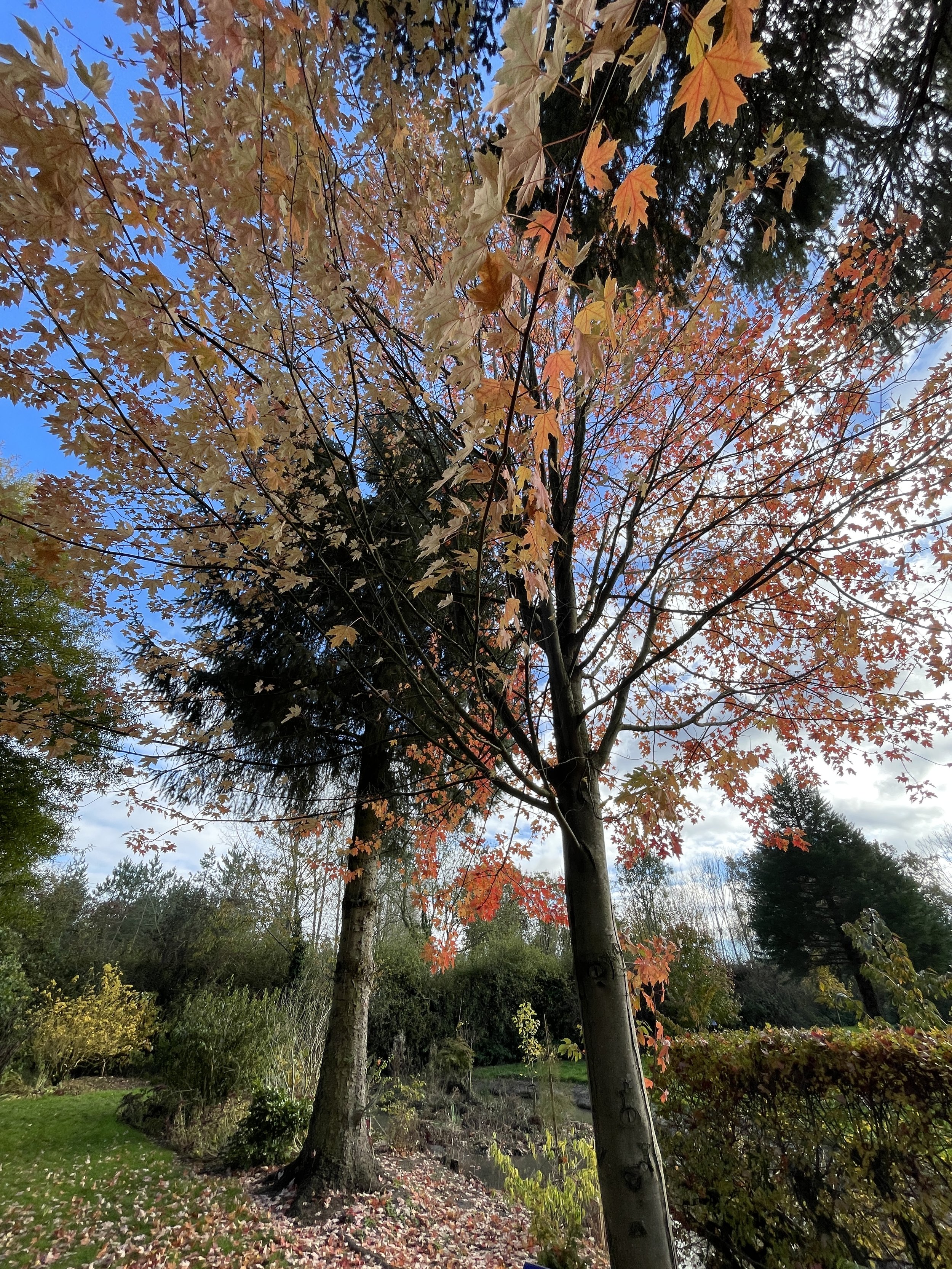Autumn and Winter Show Stoppers
Autumn and Winter Showstopping Trees
Showstopping Trees
15 stunning small to medium sized trees to make an impact over Autumn & Winter.
What will you buy?
It's really important to consider the verticals in your garden and not just think about the ground level. This is even more relevant during the Autumn and Winter months when there is less going on in our borders.
The vertical height and structures of trees give the eye something to focus on, holding you both physically and metaphorically within your space. The branches of deciduous trees offer a kris-cross of shapes to look through and create beautiful silhouettes on boundary edges, or if planted within borders they give that extra height to a border and longer term interest, with or without the foliage.
In Japan there is the concept of 'Ma' which refers to the concept of negative space. The space between, which can be physical but not just simply physical, it can also emphasise emptiness, a silence. I always think the gaps between the branches of trees in Winter, offer us a chance to sit quietly and contemplate Ma, allowing us to develop other lines of thought or just be calm.
Apart from the natural beauty and shape of trees, some have spectacular leaf colour as they head into Autumn, some have really striking bark with patterns and colours that glow or are translucent in the Winter sun. Other trees are lucky enough to have all of it, the beautiful bark and glorious foliage that colours up before falling.
I've chosen these trees because they have either stunning autumn leaf colour or amazing bark colours, (or both) and they work for smaller to medium sized gardens.
Of course there will always be more options, many Acers have incredible colour, but many do require more acidic soil, so always check the soil conditions that your tree needs to create the best stunning autumn colour. You can add an ounce or so of sulphur chips each year around the soil near the tree, but this is not really a sustainable option and we should really be planting the right trees for the right soil conditions on site.
Other Acers like Acer x freemanii 'Autumn Blaze' have incredible autumn colour, with contrasting silver-grey bark but as it grows to quite a large tree, I would recommend for a medium to large garden.
I have tried to steer away from trees which grow over 12m although there maybe a couple in the list below, as they are such a fabulous option.
If you've got room for just one more tree, have a look at these to make a sensational impact during the cooler months.
The Acers
Acers have a variety of growth habits, they can be small shrubs, small trees to large trees. It contains about 150 species, some have ornamental bark, bright orange-red autumn colour, yellow tinted foliage, fine delicate leaves and picturesque habits, colourful young stems.
Here are 5 fantastic Acers that will provide sensational colour and a real focal point in your garden.
Acer griseum - 6 - 10m high (Small)
Key Features: Cinnamon-copper coloured, peeling bark which glows in low winter sun if placed where the sun can shine through it. Leaves also blaze red in autumn. I have this growing in Neutral soil and it colours up very well. Known as the Paper-bark maple.
Acer capillipes - 7- 9m high (Small)
Key Features: Green and white veined or striped bark with brilliant orange-red leaves in autumn. Known as the Snake-bark maple. Very similar to Acer davidii, but a smaller option. (Acer davidii pictured first)
Acer ginnala - 5 - 7m (Small tree, grows wide)
Key Features: Red-brown bark to brown-grey. Bright red to dark red leaves in autumn. Tolerant of frosts, wind and heat.
Acer palmatum 'Osakazuki' - 2.5 - 6m high, (Very small) Acid, Neutral soil. Sheltered position.
Key Features: Bright , intense red-orange leaves in autumn, delicately shaped tree with maple leaves. Great for a smaller garden that's sheltered. Must have more acidic to neutral soil.
Acer palmatum 'Sango Kaku' - 6 - 8m high (Small).
Key Features: Young branch growth emerges as bright red. Leaves are a finely shaped maple leaf, that emerge as a pinky green colour and turn bright green in summer then a beautiful golden yellow and amber in autumn. An irregular habit offering dappled shade. Must be given a sheltered position away from strong winds, but it is hardy.
Betula's
Here are some of the best smaller Betula's. Most Betulas are categorised as medium to large trees, but there are some which grow to a lower height.
Betulas have slender stems and delicate branches with soft silvery-green foliage which turns yellow in autumn. The bark is textured, peeling and colourful. They are picturesque and decorative and like a sunny and open position.
Betula utilis albosinensis 'Fascination'- 6 -10m high (Small)
Key Features: Coppery-pinkish coloured peeling bark, early to leaf in Spring. Foliage turns golden yellow in Autumn.
Betula utilis 'Doorenbos' -. 8-10m high (can grow up to 15m). ('Jacquemontii', pictured here is the one you probably see lots of but is a much larger tree). ‘Doorenbos’ is a very similar tree but a smaller version. Thrives in Neutral to acid soils.
Key Features: Brilliant white bark. The young shoots, start as olive-brown, turning brown-yellow and then eventually turns pure white in their 6th year of growth. Beautifully long catkins up to 12cm for the wildlife to feast on.
Betula utilis albosinensis 'Red Panda' - 8 - 12m (Small - Medium)
Key Features: Striking red-copper coloured peeling bark, leaves turn yellow in autumn. Catkins are good for bees & birds. Rabbit resistant. Very hardy, can handle very low temperatures.
Betula albosinensis var. 'Septentrionalis' - 12 - 14m high (Medium)
Key Features: Striking brown-orange coloured bark that peels to a creamy white. Dark green leaves that turn light buttery yellow in autumn.
Other Autumn & Winter beauties for your garden
6 other trees for small to medium sized gardens
Carpinus betulus 'Rockhampton Red' - 10 - 18m (med-large sized tree)
Key Features: Tolerant of exposure. Beautiful autumn leaf colour. Very striking even if a slightly larger tree, but very good for a more exposed position.
Heptacodium miconioides 'Seven-Sons' - up to 6m (small)
Key Features: Looks like old wood with long strips of peeling bark, strikingly pale. White flowers on the tree in summer fade to lilac and last a long time. Foliage is dark green on the top and pale green underneath. A very decorative small tree. Can tolerate v. cold temperatures. Tolerant of shade, chalky, sandy soils. Can withstand periods of summer drought.
Liquidambar styraciflua 'Little Richard' up to 6m (small)
Key Features: Dwarf version of the larger Liquidambar species which can grow to 25m. Stunning autumn leaf colour, turning brilliant red and orange in autumn. Young trees should be planted in Spring to prevent frost damage and give it time to settle in.
Liquidambar 'Slender Silhouette' is also a much smaller and narrower version of the tree. (pictured on the left)
Luma apiculata - Up to 15m (Medium)
If you're in London or the South with less harsh winter temperatures then you could go for a Myrtle. It's likely to be killed or damaged in winters colder than -5ºc.
Key Features: Beautiful cinnamon, light brown peeling bark. Scented white flowers in the Summer.
Parrotia persica 'Vanessa' - 6 - 10m (Small)
Key Features: Stunning autumn foliage, turns yellow to red/orange and purple. 'Vanessa' grows to a pyramid shaped tree but is narrower than the species which can be extra wide.
Multistem versions are also possible (The one pictured is not ‘Vanessa’)
Final image is Parrotia Persia 'Red October'
Prunus serrula - 8-10m (Small)
Key Features: Shiny mahogany, browny-red bark. Peels to leave a shiny smooth under layer. Doesn't like too much wind but is generally undemanding and looks beautiful all year round even when it's lost its leaves.
All images taken by *Amanda Roland-Convey, courtesy of various gardens and nurseries.
Bluebell nursery, Harlow Carr, Hillier Gardens, RHS, Anglesey Abbey, Wimpole Hall, Cambridge Botanics, Majestic Trees.
*except ‘Red Panda’ sourced from Burncoose Nurseries and ‘Acer ginnala’ sourced from Van De Berk Nurseries.










































































































